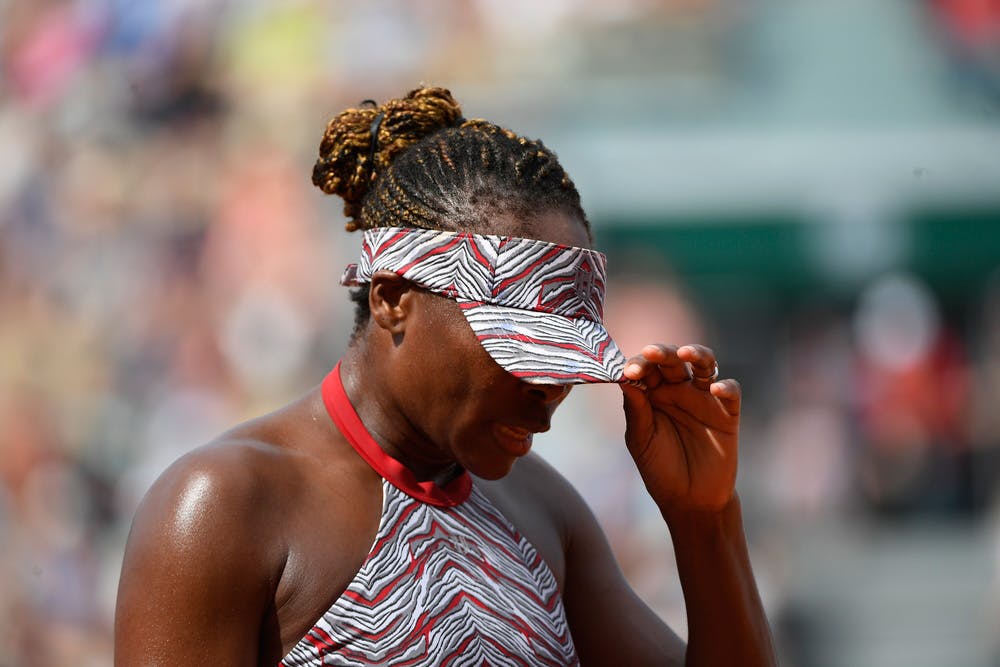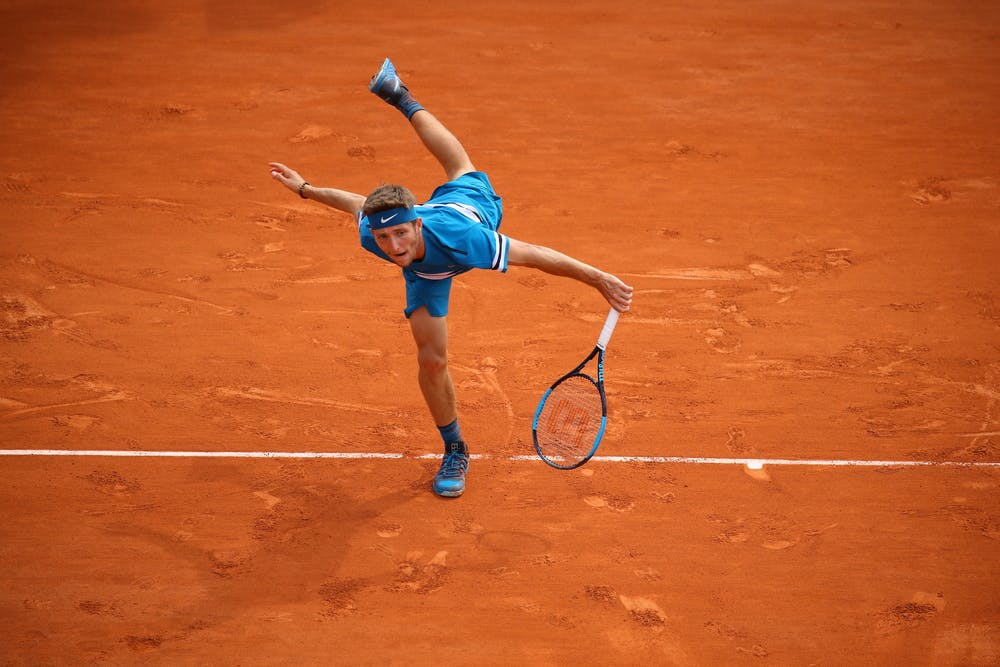READ MORE
Venus out, shocked by Wang

A brush with royalty, youth trumps experience, World Cup predictions and 'Bonne Fête, Mamans!'

Today is Fête des Mères - or Mother’s Day - in France, and by happy coincidence the schedule gifted a day off to the trio of returning tennis moms. Serena Williams, Victoria Azarenka and Mandy Minella – all of whom have gained entry to the main draw thanks to the WTA Special Ranking rule for maternity – have had the day to spend with little Olympia, Leo and Emmalina respectively.
As these genetically gifted tots grow up on tour, one can only wonder if Mini Tennis will be put on in the creches provided by Grand Slam venues. Serena and Vika recently shared tweets about motherhood and discussed the chance of seeing their sprogs play tennis together in the future. “If Leo would like that!!” wrote Serena. “Haha I’m not sure if Olympia will choose tennis but we will see!!!” Azarenka replied: “Haha I’m not sure Leo will choose tennis either, but either way they will have fun playing together.”
The king of clay, aka Rafael Nadal, has reigned supreme en route to Roland-Garros. In tennis we embrace the language and image of royalty, according each player regal respect with ranks of attendants (ball kids on hand with towels and umbrellas to provide shade) to the formal atmosphere of court procedures. But it is particularly fitting that we embrace the language of royalty at Roland-Garros where Mellerio, the jeweler and silversmith responsible for the Coupe des Mousquetaires, has a prestigious history in supplying the royal households of Europe. Granted special privileges in 1613 by Marie de Medici, Regent of France, the family-owned jeweler has an incredible heritage which includes providing gold lace for Marie-Antoinette’s wedding dress in 1770.
...Part 1. Venus Williams was asked about her thoughts on seeing her sister Serena at the British Royal wedding between Prince Harry and Ms Meghan Markle, and about the presence of African-American culture in the heart of Britain. With exquisite brevity, she replied, “Honestly, I was at practice, so I didn't see the wedding. I did see her Instagram, though. That's kind of as much as I was exposed to it.” Venus needed another prompt before adding, “I thought she looked great.”
...Part 2. Spotted on Court Philippe-Chatrier: Pippa Middleton, sister of the Duchess of Cambridge, with her husband James Matthews. Well-known tennis fans, they were also sporting official Roland-Garros Panama hats. Chapeau to them!
About the continuing French association with the record for the longest match in the history of tennis?
Before Nicolas Mahut and John Isner shared the exhausting experience of setting the record for the longest match (11 hours and five minutes, 183 games, played over three days at Wimbledon), the record was held by French Davis Cup partners Arnaud Clement and Fabrice Santoro for their 2004 first-round encounter at Roland Garros. This epic, played on Court Suzanne Lenglen, lasted six hours and 33 minutes, 71 games and was played over two days. The score in the final set, 16-14 compared to Mahut and Isner’s Herculean decider of 70-68, belied the length of rallies endured by these classic dirtballers. “It was a beautiful match," Santoro said. "It was a great match on a great court in Paris with probably the best crowd ever for us.”
The third match on Court 7 saw the oldest man in the draw, Ivo Karlovic, beaten by the youngest: French wildcard Corentin Moutet. At 39 years and 88 days, Karlovic is more than 20 years older than Moutet, who is 19 years and 38 days old. Roland Garros debutant Moutet is one of six teenagers in the main draw, while Karlovic is one of the four men aged 30 or over to compete in the men’s singles here.

We talk about the court surface, but the characteristic of each Roland-Garros court emanates from layers of stone materials almost a metre deep into the ground. For a start, 1.1 tonnes of red clay are required to build a single court (1.5 tonnes for Court Philippe-Chatrier). The bare earth is covered by five layers: the first is made up of stones, followed by at least 30cm of crushed gravel, 7 to 8cm of clinker (volcanic carbon residue), 7 to 10cm of limestone and finally a thin layer of crushed ochre-brick about two millimetres thick. A total of 100 people are responsible for maintaining the courts during the qualifying rounds and the tournament.
It hasn't escaped the notice of sports fans far and wide that the FIFA World Cup is a mere matter of days away - and the same goes for the world's best tennis players. First to nail his colours to the mast in press was No.2 seed Alexander Zverev who, much as he would love to be there in person, hopes to have more pressing matters once the tournament is under way.
"I mean, my grandma and grandfather will be going there, but the World Cup is during Wimbledon, so I hope I will be in London in that time," said the German, born to Russian parents. As for his own loyalties, he left little doubt when offering his tip for the title. "I'm from Germany, so there is no question about the first one. Second, Brazil maybe? I hope. I hope it's going to be a Brazil-Germany final. Third I will give it to Russia, because it's the host nation."